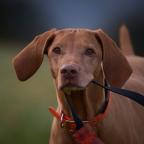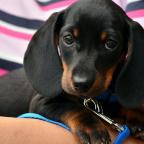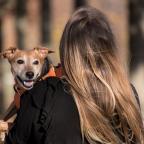
Recognizing the Signs: 10 Symptoms of Separation Anxiety in Dogs
Separation anxiety is a common behavioural issue that many dogs face when left alone for extended periods. It can manifest in various ways, often leading to distress for both the dog and its owner. Understanding the symptoms of separation anxiety is crucial for providing appropriate care and support for your furry friend. In this blog post, we’ll explore 10 key signs that your dog may be experiencing separation anxiety.
Excessive Barking or Howling
One of the most noticeable signs of separation anxiety is excessive vocalization when you’re not around. Your dog may bark, whine, or howl incessantly as a way to express distress and seek your attention.
Destructive Behaviour
Dogs with separation anxiety may engage in destructive behaviours such as chewing furniture, scratching doors, or digging carpets. This destructive behaviour is often a result of anxiety and an attempt to alleviate stress.
Accidents
Another common symptom of separation anxiety is indoor accidents, even if your dog is typically well-trained. When left alone, anxious dogs may urinate or defecate inside the house due to stress and insecurity.
Attempted Escape
Some dogs with separation anxiety may try to escape from their confinement when left alone. They may scratch at doors or windows, attempt to jump over fences, or even break out of crates in an effort to find their owner.
Excessive Drooling or Panting
Anxious dogs may exhibit physiological signs of stress, such as excessive drooling or panting. These symptoms can occur when you’re preparing to leave, as well as during your absence.
Pacing or Restlessness
If your dog exhibits pacing or restlessness when you’re not around, it could be a sign of separation anxiety. Dogs may roam aimlessly around the house or exhibit repetitive behaviours as a way to cope with their anxiety.
Loss of Appetite
Some dogs may lose interest in food when left alone due to anxiety. This loss of appetite can be a temporary response to stress and may resolve once the owner returns.
Excessive Salivation
Similar to drooling, excessive salivation can indicate heightened levels of stress and anxiety in dogs. You may notice wet spots on the floor or furniture where your dog has been lying.
Shadowing Behaviour
Dogs with separation anxiety may exhibit shadowing behaviour, following their owners from room to room and becoming increasingly clingy. This behaviour is an attempt to maintain close proximity and seek comfort and reassurance.
Depression or Despondency
In severe cases of separation anxiety, dogs may exhibit signs of depression or despondency when left alone. They may become lethargic, withdrawn, or uninterested in activities they usually enjoy.
Conclusion
Recognizing the symptoms of separation anxiety in dogs is the first step toward addressing this common behavioural issue. If you notice any of these signs in your furry companion, it’s essential to seek guidance from a veterinarian or professional dog trainer. With patience, understanding, and appropriate intervention, you can help your dog overcome separation anxiety and lead a happier, more balanced life. Read More…. Top Quality Pet Supplies







